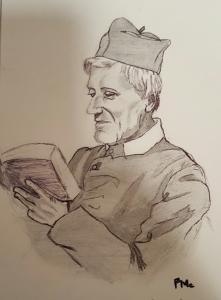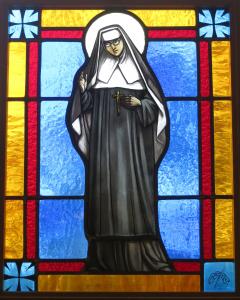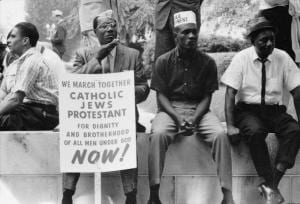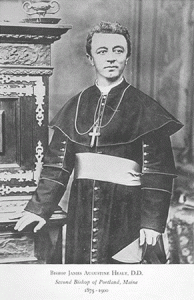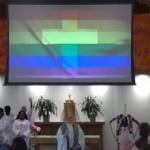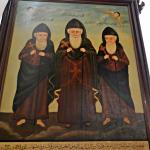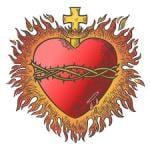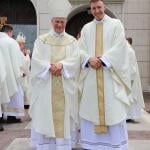Herbert Alfred Vaughan (1832–1903) was a British Catholic cardinal and Archbishop of Westminster. He was the founder in 1866 of St Joseph’s Foreign Missionary College, informally called Mill Hill. In 1871 Vaughan led a group of priests to the United States to form a mission society whose purpose was to administer to freedmen. In 1893 the society reorganized to form the US-based St. Joseph Society of the Sacred Heart. Vaughan also founded St. Bede’s College, Manchester. As Archbishop of Westminster, he led the capital campaign and construction of Westminster Cathedral. Herbert Vaughan was born at Gloucester, the eldest son of Lieutenant-Colonel John Francis Vaughan, of an old recusant (Roman Catholic) family, the Vaughans of Courtfield, Herefordshire. His mother, Eliza Rolls from The Hendre, Monmouthshire, was a Catholic convert and intensely religious. All five of the Vaughan daughters became nuns, while six of the eight sons took Holy Orders and became priests. Three were later called as bishops: Roger became the Roman Catholic Archbishop of Sydney, Australia; John the titular bishop of Sebastopolis and auxiliary bishop in Salford. Herbert Vaughan studied for six years at Stonyhurst College, then with the Benedictines at Downside Abbey, near Bath, England; and finally at the Jesuit school of Brugelette, Belgium. The latter was later relocated to Paris, France. In 1851 Vaughan went to Rome, Italy. He had two years of study at the Accademia dei nobili ecclesiastici, where he became a friend and disciple of Henry Edward Manning. Manning, a Catholic convert, became the second Cardinal Archbishop of Westminster following the restoration of the Catholic hierarchy in Great Britain in 1850. Vaughan took Holy Orders at Lucca in 1854. On his return to England, he became Vice-President of St Edmund’s College, at that time the chief seminary in the south of England for candidates for the priesthood. Since childhood, Vaughan had been filled with zeal for foreign missions. He decided to found a great English missionary college to fit young priests for the work of evangelizing non-Christians abroad. With this goal, he made a fund-raising trip to America in 1863, from which he returned with £11,000. He succeeded in opening St Joseph’s Foreign Missionary College, Mill Hill Park, London, in 1869. Vaughan also became proprietor of The Tablet, and used its columns to proclaim his message. In 1871 after the American Civil War, Vaughan led a group of priests to the US to establish a mission society to administer to freedmen in the South. In 1893 the society, based in Baltimore, Maryland, reorganized as an American institution. Among its founders was the first African-American Catholic priest trained and ordained in the US. In 1872 Vaughan was consecrated as the second Bishop of Salford; during his tenure he established St Bede’s College. In 1892 Vaughan succeeded Manning as Archbishop of Westminster, receiving the cardinal’s hat in 1893. Vaughan was a man of different type from his predecessor; he had none of the ultramontane Manning’s intellectual finesse or his ardor for social reform. Vaughan was an ecclesiastic of remarkably fine presence and aristocratic leanings, intransigent in theological policy, and in personal character simply devout. It was Vaughan’s most cherished ambition to see an adequate Westminster Cathedral. He worked untiringly to secure subscriptions for a capital campaign, with the result that the foundation stone for the cathedral was laid in 1895. When Vaughan died in 1903 at the age of 71, the building was so far complete that a Requiem Mass was said there. His body was interred at Mill Hill Park but it was later moved to the Cathedral.
(from Wikipedia)



